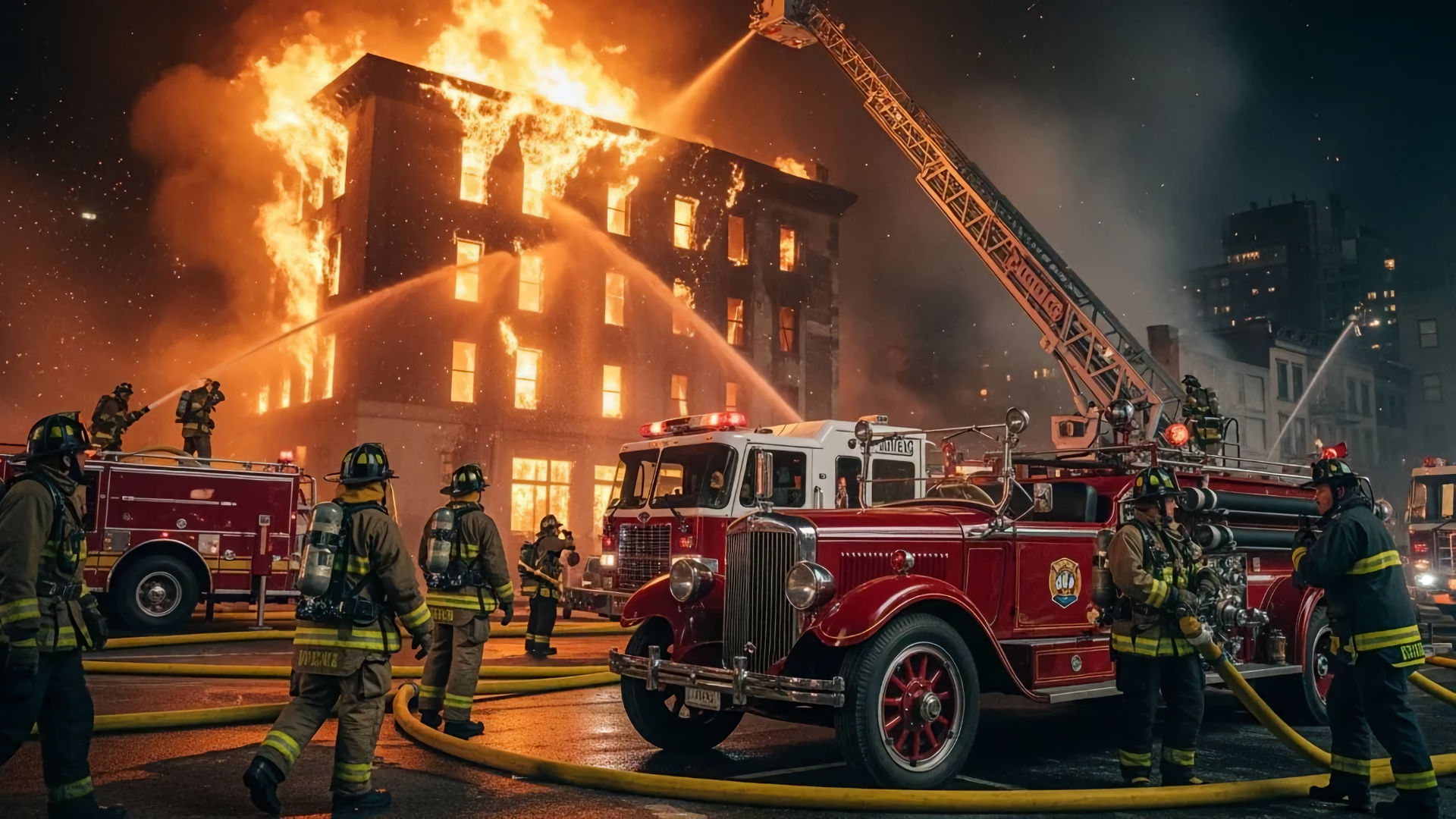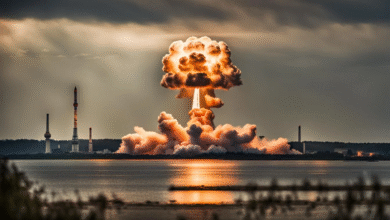The History of the Fire Service
For as long as people have lived in communities, they have battled against one of nature’s most destructive forces: fire. From early bucket brigades to high-tech rescue operations, the history of the fire service is one of innovation, bravery, and relentless public service. The journey from ancient watchmen to modern, professionally trained responders reflects not only the technological progress of societies but also the growing recognition of the importance of safeguarding lives and property.
Ancient Roots and Early Innovations
In ancient times, early civilisations such as the Egyptians and Romans developed rudimentary tools to help control fires. The Egyptians experimented with hand pumps to spray water, while the Romans went a step further with the creation of one of the earliest organised fire brigades. In 6 AD, Emperor Augustus established the Vigiles, a force of thousands tasked with patrolling the streets of Rome at night, ready to sound the alarm and combat fires with basic tools like buckets, hooks, and axes. These early responders, despite lacking sophisticated equipment, laid the groundwork for what would eventually become professional fire services.
From Bucket Brigades to Engines
As cities grew more crowded and buildings taller, the risk of devastating fires increased. In medieval Europe, firefighting was left mainly to citizens, often organised into loosely connected guilds or neighbourhood groups. Each community had its own methods, ranging from fire watchers on rooftops to simple bucket chains. In some areas, bells were used to alert townsfolk of a fire, prompting the formation of long human chains passing buckets from a water source to the flames. Fires could devastate entire towns, and it often took a significant catastrophe to spur reform.
One such event was the Great Fire of London in 1666. This massive blaze, which destroyed much of the city, exposed the inadequacies of the existing fire response system. In the aftermath, insurance companies began forming their own fire brigades to protect buildings they covered. These companies issued metal plaques for buildings, signifying coverage. It was a primitive system, and it meant that if a fire broke out at an uninsured property, help might not arrive at all. While this approach helped incentivise building protection, it also highlighted the need for coordinated municipal services.
The introduction of the leather fire hose in the late 17th century, thanks to Dutch inventor Jan van der Heiden, revolutionised firefighting by allowing more precise water delivery. Around this time, wheeled fire engines with hand-operated pumps became common in larger cities, making responses faster and more effective. These engines were often pulled by men or horses, and could deliver water with significantly greater force than bucket lines. They also allowed crews to reach upper stories of buildings more effectively, which was crucial as urban centres grew taller.
Professionalisation and the Rise of Fire Brigades
The 18th and 19th centuries were a turning point in the professionalisation of fire services. In Scotland, James Braidwood founded one of the world’s first municipal fire brigades in Edinburgh. His emphasis on training, discipline, and readiness influenced the formation of similar brigades across Britain. Eventually, Braidwood was appointed to lead what would become the London Fire Brigade. Braidwood’s approach emphasised teamwork and the importance of responding quickly and efficiently, even at significant personal risk. Tragically, he died in the line of duty during a warehouse fire on London’s Tooley Street in 1861, becoming one of the first recorded firefighter fatalities in Britain.
Meanwhile, in the United States, Benjamin Franklin founded the Union Fire Company in 1736 in Philadelphia. This volunteer fire service set a precedent, and similar companies sprang up across the country. For decades, American fire companies were mostly volunteer-run and occasionally competitive. It wasn’t unusual for rival brigades to race to the scene and argue over who would put out the fire. These early fire companies were often community hubs, serving both a practical and social function. Over time, however, cities realised the importance of having coordinated, city-funded fire departments that could ensure consistency, coverage, and training.
Steam-powered engines arrived in the 19th century, further advancing the fire service’s capabilities. These powerful machines could deliver more water, more quickly, than ever before. Some steam engines even incorporated early versions of onboard water tanks and pressure systems. With increased efficiency came the need for permanent, full-time firefighters. Cities began to see the benefit of professional, paid firefighters. In time, many major urban areas around the world adopted publicly funded fire departments.
Modernisation, Tools, Tactics and Safety
Firefighting continued to evolve through the 20th century. Motorised fire trucks replaced horse-drawn engines, while improvements in protective clothing and equipment dramatically improved firefighter safety. Helmets, heavy-duty jackets, and fire-resistant boots became standard issue. The development of self-contained breathing apparatus meant that firefighters could safely enter smoke-filled buildings, while radio communication allowed for better coordination on the scene. Ladder trucks and hydraulic platforms extended firefighters’ reach, allowing them to tackle blazes in tall buildings with much greater efficiency.
War, Civil Defence and National Fire Services
Wars and natural disasters also influenced the fire service. During World War II, the need for an efficient, centralised response to bombing raids led to the creation of the National Fire Service in Britain. This force brought together thousands of firefighters from across the country, standardising procedures and encouraging a spirit of national coordination. After the war, many fire services retained elements of this centralisation, improving coordination and training standards. In other parts of the world, major disasters like the Great Kanto Earthquake in Japan or wildfires in North America also drove innovations in fire response and emergency planning.
Challenges, Reforms and Modern Issues
The role of the firefighter also expanded. It wasn’t just about putting out flames anymore. Firefighters began responding to medical emergencies, road accidents, and hazardous material incidents. Fire prevention became just as important as fire suppression. Educating the public, conducting safety inspections, and enforcing fire codes helped reduce the number of fires in many places. In schools and communities, firefighters became familiar faces, teaching children about smoke alarms, emergency exits, and stop-drop-and-roll procedures.
The Fire Service in the 21st Century
Today, fire services are incredibly diverse and multifaceted. In some parts of the world, particularly in rural areas, volunteer firefighters still play a vital role. In large cities, fire departments operate with thousands of personnel, specialised units, and sophisticated equipment. They deal with structure fires, forest fires, floods, earthquakes, and even terrorist attacks. Some urban fire departments now include dedicated arson investigation teams, hazardous materials units, and urban search-and-rescue squads capable of responding to collapsed buildings or confined spaces.
Modern firefighters train rigorously. They learn not just how to extinguish fires, but also how to navigate collapsed buildings, perform water rescues, handle hazardous chemicals, and administer emergency medical care. Training academies often simulate real-life scenarios to prepare recruits for the unexpected. Many departments now use drones to assess fires from the air, and some are even testing robotic equipment for high-risk scenarios. Advanced computer models are used to predict fire behaviour in various environments, helping commanders make informed decisions during active emergencies.
Despite technological advances, firefighting remains inherently dangerous. Firefighters put their lives on the line to save others. Tragic incidents still occur, reminding us of the risks they face. Events like the Grenfell Tower fire in London or wildfires in California have sparked renewed discussions about building codes, response times, and firefighter safety. But these same events also lead to constant improvement in safety protocols and equipment. Innovations in flame-resistant fabrics, air quality monitoring, and structural integrity analysis are helping make the job slightly safer.
The Future of Firefighting
The future of firefighting is likely to see even more integration with innovative technology. Buildings equipped with sensors can alert fire departments automatically. AI systems can help predict fire risk by analysing weather patterns, structural vulnerabilities, and materials stored in buildings. Environmentally friendly fire engines powered by electricity or hydrogen may become more common as cities push for green initiatives. Additionally, predictive analytics could help departments allocate resources more efficiently, reducing response times in high-risk zones.
Yet, at its core, the fire service remains about people helping people. It’s about courage, teamwork, and service. The firefighters who rush into danger, who train relentlessly, who stand ready at all hours, these are the individuals who carry forward a tradition that spans thousands of years. The history of the fire service is not just a story of water and flame, of engines and hoses. It’s a testament to human determination to protect and serve. From the Vigiles of ancient Rome to today’s elite rescue squads, the mission remains the same: to save lives, to preserve property, and to answer the call when it matters most.
The History of the Fire Service FAQ
The first known organised fire brigade was the Roman “Vigiles,” established by Emperor Augustus around 6 AD.
James Braidwood established one of the earliest municipal fire brigades in Edinburgh, Scotland, in the 1820s.
Professionalisation began in the 19th century with the advent of steam engines and municipal funding, replacing volunteer brigades in many cities.
Modern firefighters respond to medical emergencies, road accidents, hazardous materials incidents, and often perform urban search and rescue operations.






